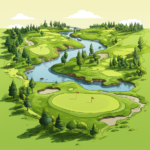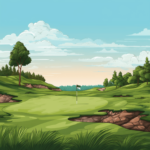Hombre Golf Club Rebrands as Golf Courses Nearby
Hombre Golf Club will be rebranding as Golf Courses Nearby, which will provide detailed information and reviews on 10,000+ golf courses across the United States along with tutorials and lessons for new and experienced golfers. The team consists of several former pro and current collegiate golfers, who have a wealth of experience to provide on how to pick out the right course for your golf game.
What did hombre golf courses do?
Hombre Golf Club was a golf course in Panama City Beach, Florida that was sadly destroyed by Hurricane Michael in October of 2018. Since then, Hombre Golf Club has served as an informational resources for both new and experienced golfers across the web.
What Does Golfcoursesnearby.com do?
Golfcoursesnearby.com is meant to be the one stop shop destination for golfers looking for the perfect golf course. Our team spends 40-50 hours every week analyzing data on golf courses to provide a recommendation for golfers looking for the right course. We measure over 35 criteria for every course including the cost, difficulty, club pro, reservation policy, grass type, seasonality, tee time reservation policy, and much more!






